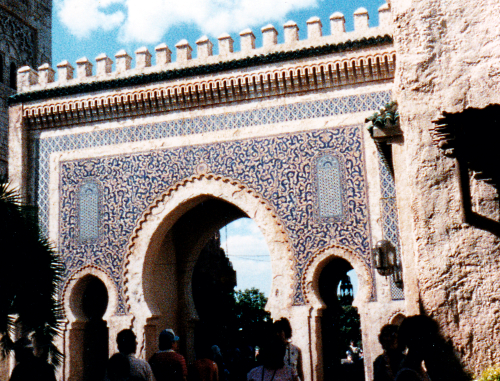I am probably going to spend the rest of my life saying that I went to Epcot for the first time in 1982. I know this isn’t true, and that I went for the first time in 1989, but it’s something that I believed for a long time until I started this project and it’ll be a long time before I shake it.
Yes, Epcot opened in 1982. Yes, I went to WDW in 1982. But I went to WDW in July and Epcot opened in October. Therefore I could not have been there until our next Florida trip in 1989.
First, as always, a little (or, I guess, generally, a lot) of history.
The original term “E.P.C.O.T.” was Walt Disney’s dream of building an actual city out there in central Florida. The name is an acronym of “Experimental Prototype Community/City of Tomorrow.” Disney dreamed of making a community in the shape of a circle, with the business district in the center, other buildings (schools, recreation, health care, etc.) in a ring around that, and then a residential area around that.
Disney envisioned the “experimental” as quite possibly the most important part. They would experiment with agriculture and nutrition, with medicine and science, with urban planning, etc.
After Disney’s death in 1966, the Disney corporation decided not to go through with this plan. With one thing and another, though, they ended up developing a theme park using some of these ideas. The focus of the theme park, now called “EPCOT Center” was on edutainment.
There were pavilions dedicated to agriculture, to communication, travel, and to marine science, among other things. We didn’t watch too many of the animatronic shows when we were there the first time, but we did some of the rides, including the ride that led to the hydroponic garden, which was awesome, and the 3d movie Captain EO, starring Michael Jackson. My father was not impressed by the movie.
The back half of Epcot is the World Showcase. For reasons that you’ll understand, since the original intent of this blog was travel writing, I adore the World Showcase.
There are 11 countries in the World Showcase, including (roughly geographically, starting in North America) Canada, the United States, Mexico, the United Kingdom, France, Germany, Norway, Italy, Morocco, China, and Japan. Originally the plan was to have more countries, but that never panned out.
I loved the United Kingdom, of course, since I’ve totally been an Anglophile since my childhood. Japan was awesome both for being so different, and also for having an actual . . . branch? of a real Japanese department store, the Mitsukoshi Department store.
I have always especially loved Epcot Morocco, though. I mean, look at that arch in the photo above. What’s not to just adore there? And much, much later I found out that there’s a reason why Morocco’s tile work is so amazing. It was done by the personal artisans of King Hassan II, the king of Morocco from 1961 through 1999. Wow.
I’ve been reading some articles about how the front half of Epcot is not what it used to be, which is sad. Epcot was one of my favorite theme parks for the edutainment of it all. I’m not a huge fan of theme parks (though I do need to visit Fiesta Texas and SeaWorld again so that I can blog about them), but if edutainment theme parks were bigger, I’d totally be there.
Today’s Gratuitous Amazon Link is for the next storyline in the Avatar: The Last Airbender comics: The Search. In this storyline, the Gaang take off with Azula in tow to find Zuko’s mom, Ursa. I become increasingly worried about Azula’s mental health in this one, as well.

